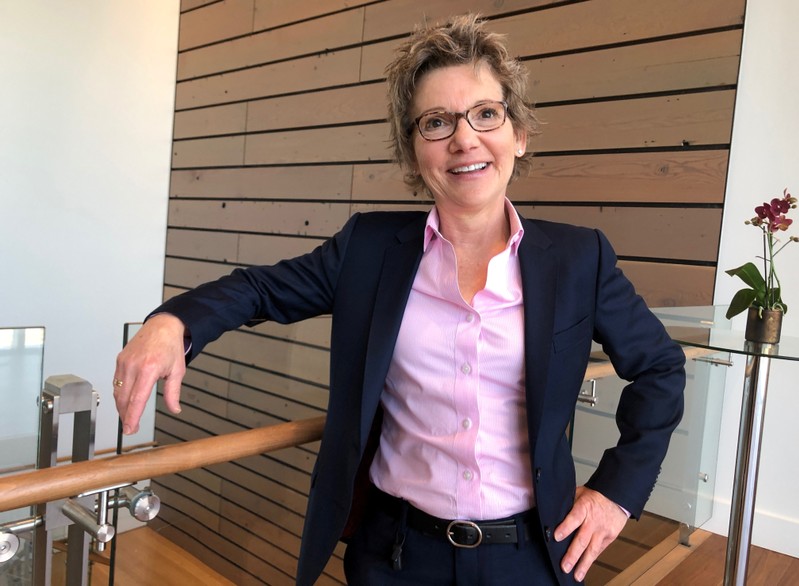
San Francisco Federal Reserve President Mary Daly poses for a photo after a speech at the Commonwealth Club in San Franciso, California, U.S., March 26, 2019. REUTERS/Ann Saphir
March 26, 2019
By Ann Saphir
SAN FRANCISCO (Reuters) – Federal Reserve policymakers need to be vigilant that muted inflation does not become ingrained in their expectations, but the U.S. central bank’s patient approach to monetary policy should allow inflation to reassert itself, San Francisco Federal Reserve Bank President Mary Daly said on Tuesday.
“Patience is where I’m at right now,” Daly told reporters after a speech at the Commonwealth Club in San Francisco. She added that with the U.S. economy now in “a good place,” she wants to leaves rates where they are “until the data suggests we go one way or another way.”
Daly’s comments on the threat of too-low inflation go some way to explain Fed policymakers’ decision last Wednesday not only to keep their target for short-term rates in the range of 2.25 percent to 2.5 percent, but also to mostly abandon projections for any interest rate hikes this year.
Fed Chair Jerome Powell cited slowing economic momentum and risks like trade tensions as reasons for putting further rate hikes on hold and said that close-to-target inflation gives the Fed room to be “patient.”
Daly’s comments on Tuesday show there is at least some worry internally at the Fed that low inflation may represent a downside economic risk in itself.
Despite a U.S. labor market that has been “nothing short of extraordinary,” the Federal Reserve has fallen short on its 2-percent inflation goal for years, and has only “grazed” it over the last year, Daly said in a speech earlier on Tuesday.
Continued misses on inflation could erode the public’s trust in the central bank, undercutting its ability to make effective monetary policy.
Speaking later to reporters, she said she is confident 3.8 percent unemployment will eventually push wages and prices upward.
“It’s just taking a longer time than it typically does,” she said. “That’s part of what feeds into my patient strategy.”
Like several other Fed policymakers who have spoken since the Fed put rate policy on an extended hold last week, Daly nodded to the possibility that the next Fed move could be to ease policy.
“If you get into a point, though, where you can’t achieve your 2-percent target, then policy considerations to assure that you do have to be taken into account,” Daly said. “But right now, I’m not there.”
FOLDING TO TRUMP
After her speech, Daly fielded a number of questions, including whether the Fed had “folded” to pressure from President Donald Trump by putting a stop to interest-rate hikes after he had criticized the central bankers.
“No,” Daly said, drawing the word out to underscore her disagreement. While the decision may have been “observationally equivalent” to responding to Trump’s Twitter tirades, it was driven by the data, she said.
While she supported the Fed’s rate rise in December because the economy was growing at a faster rate than its potential, she said, rates are now at a “neutral” level where they are no longer boosting or holding back growth. That makes patience on monetary policy “the way to go, because you don’t want to guess that you need to do more, or guess that we need to do less, you just want to be patient and look at the data.”
Daly also expressed little discomfort about Trump’s pick of loyalist Stephen Moore to be a Fed governor, saying that once they gather around the table, Fed policymakers make up an independent, democratic institution that sets rates based on what is best for the American people.
Daly does not vote on the Fed’s policy decisions this year, but participates in regular policy deliberations, the next of which will occur April 30 – May 1.
(Reporting by Ann Saphir; Editing by Chizu Nomiyama)

